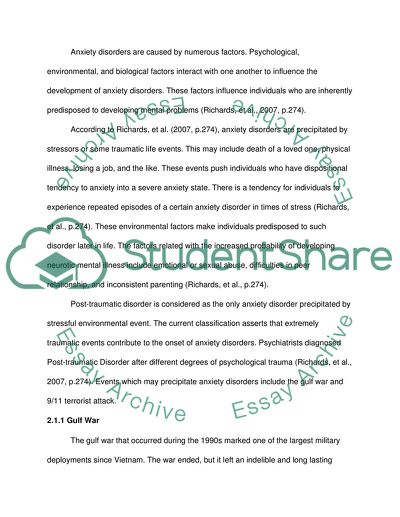Cite this document
(“The Causes and Treatments of Anxiety Disorders Essay - 1”, n.d.)
The Causes and Treatments of Anxiety Disorders Essay - 1. Retrieved from https://studentshare.org/psychology/1587127-to-what-extent-do-911-and-gulf-war-influnce-the-onset-and-progression-of-anxiety-disorders
The Causes and Treatments of Anxiety Disorders Essay - 1. Retrieved from https://studentshare.org/psychology/1587127-to-what-extent-do-911-and-gulf-war-influnce-the-onset-and-progression-of-anxiety-disorders
(The Causes and Treatments of Anxiety Disorders Essay - 1)
The Causes and Treatments of Anxiety Disorders Essay - 1. https://studentshare.org/psychology/1587127-to-what-extent-do-911-and-gulf-war-influnce-the-onset-and-progression-of-anxiety-disorders.
The Causes and Treatments of Anxiety Disorders Essay - 1. https://studentshare.org/psychology/1587127-to-what-extent-do-911-and-gulf-war-influnce-the-onset-and-progression-of-anxiety-disorders.
“The Causes and Treatments of Anxiety Disorders Essay - 1”, n.d. https://studentshare.org/psychology/1587127-to-what-extent-do-911-and-gulf-war-influnce-the-onset-and-progression-of-anxiety-disorders.


